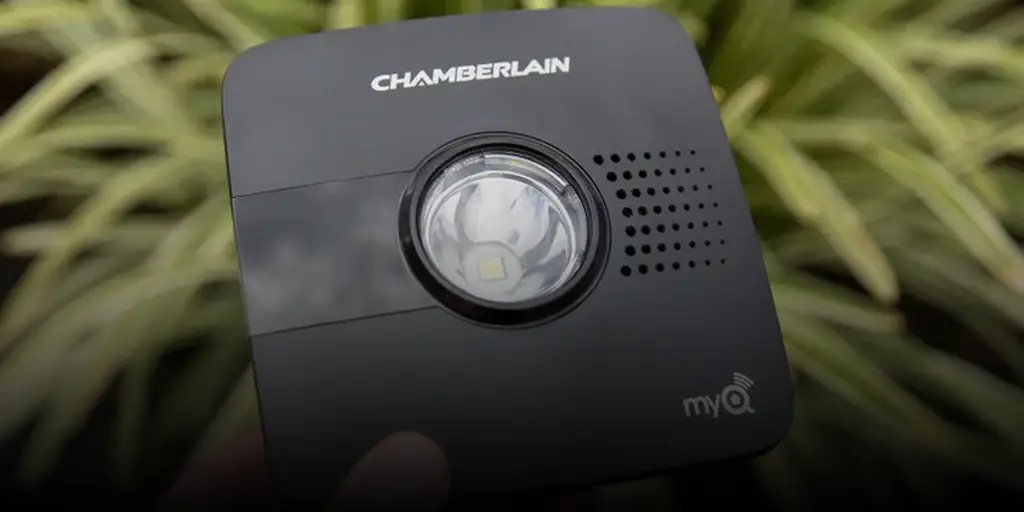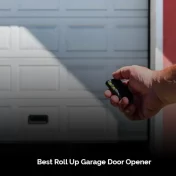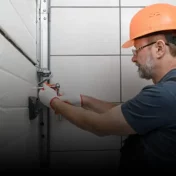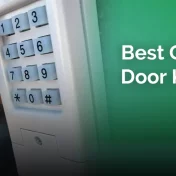In the world where the integration of smart home devices is not just a luxury but a common utility, the question of compatibility and functionality becomes paramount.
The Chamberlain MyQ garage door opener has carved a niche for itself as a reliable, efficient, and user-friendly device.

However, as we advance into 2024, homeowners and tech enthusiasts are left pondering – does Chamberlain MyQ seamlessly integrate with Google Home?
In this comprehensive guide, we’ll explore this query in detail, offering insights, detailed steps for integration, exploring alternatives, and peeling back layers on the security and future implications of this integration.
Our focus is to offer a balanced mix of user experiences, expert insights, and official updates to give you a holistic view of where the MyQ and Google Home integration.
Key Areas Explored:
- Current status of MyQ and Google Home integration.
- Step-by-step guides to connecting MyQ with various voice assistants.
- Examination of alternatives, security concerns, and future predictions.
By the end of this article, you’ll be well-equipped with the knowledge, insights, and resources to make informed decisions about integrating MyQ with Google Home and other smart systems, ensuring your smart home is as efficient, secure, and responsive as possible.
The Current State of MyQ and Google Home Integration
As of 2024, the landscape of integrating the Chamberlain MyQ with Google Home has experienced some turbulence.
Users, new and old, are navigating a mix of experiences, fueled by software updates, policy changes, and technological advancements.
Historically, MyQ enjoyed a decent relationship with Google Assistant, albeit with a fee. However, with time, the integration has seen some setbacks.
Users have reported issues linking the two, a situation corroborated by official statements from both MyQ and Google.
The paid feature to link Google Assistant with MyQ, though unpopular, offered a bridge between the garage opener and the voice assistant.
Current Challenges
- Compatibility Issues: Users, especially new ones, are facing challenges linking MyQ to Google Home. The previously seamless integration is currently disrupted, leading to user dissatisfaction.
- Official Updates: MyQ’s official website acknowledges these challenges, citing the unavailability of Google Assistant access for new MyQ users. It’s a step back, considering the previous ease of integration.
- User Experiences: Mark, a MyQ user, echoed the sentiments of many when he expressed disappointment at the inability to link MyQ and Google, a feature that worked seamlessly a couple of years ago.
User Sentiments on MyQ-Google Integration
| User | Date | Comment |
|---|---|---|
| Mark | May 7, 2023 | Facing issues linking MyQ and Google at sister’s home. Not finding MyQ in Google’s apps. |
| Be | Aug 6, 2022 | Chamberlain/MyQ is sunsetting the integration for unspecified reasons. |
| Frank Booth | Jan 28, 2023 | The integration is not just limited to Google but also faces challenges with Alexa. |
The Tech Dilemma
While technology advancements aim to make life easier, they’re not without their challenges. The current state of MyQ and Google Home integration is a testament to this fact.
Users and experts are in a waiting pattern, anticipating resolutions that will reinstate the seamless operation of these two tech giants.
The Summary
As it stands, new users are unable to integrate MyQ with Google Assistant.
Existing users who have successfully linked their accounts can continue to enjoy the service, but they’re walking a tightrope – signing out of their Google Account means they cannot relink MyQ to Google Assistant.
The state of affairs raises crucial questions about the future of this integration. Will there be a resolution? Is this a permanent or temporary setback?
These unanswered questions linger, marking a period of uncertainty for users and enthusiasts alike.
Detailed Steps to Connect MyQ with Google Assistant
In the midst of the prevailing uncertainties, there still exist avenues for users, especially the existing ones, to connect MyQ with Google Assistant.
We unfold two primary methods that have proven effective: the MyQ Subscription Service and IFTTT (If This Then That).
MyQ Google Assistant Subscription Service
Though typically a paid service, it is currently free and involves a two-step process to effectively link MyQ to Google Assistant.
Step 1: In-App Connection
- Open Google Assistant and navigate to the “Compass” at the bottom right corner.
- Type ‘MyQ’ in the search bar and select the app.
- Click ‘Link’ and enter your MyQ credentials to facilitate the control of your MyQ devices by Google Assistant.
Step 2: Activate Subscription
- Navigate to MyQ Google Assistant page.
- Scroll and click “Activate Subscription.”
- Login and complete the transaction to activate.
Voice Commands Enabled:
- “OK Google, ask MyQ to close the garage door.”
- Prompted with “Which Door” for specificity, even if you own a single door.
Connecting via IFTTT
This method is deemed simpler and user-friendly, offering a swift passage to voice-controlled garage management.
Steps to Integrate:
- Login to IFTTT and create a new applet.
- Navigate to “Explore” and then “Create” for a custom setup.
- For the IF Trigger, select Google Assistant’s “Say a Simple Phrase” trigger.
- Input the voice command, e.g., “Close Garage.”
- For THEN THAT Action, search for MyQ and choose “Close Door” as the action and select your garage door.
End Result: You can simply command, “OK Google, close garage,” triggering the IFTTT applet for a seamless action.
Comparative Insights
| Aspect | MyQ Subscription Service | IFTTT |
|---|---|---|
| Ease of Setup | Moderate complexity | Simplified process |
| Voice Commands | Specific to MyQ invocation | Direct and user-friendly |
| Status Check Capability | Enabled | Not available |
| Cost Implication | Currently free (usually paid) | Free |
The Security Factor
MyQ’s decision to disable voice-controlled opening of the garage is rooted in security considerations, minimizing unauthorized access.
Expert Insight:
“The dilemma of smart home ecosystems lies in the balance between convenience and security. Each feature, each integration, is a careful dance around this intricate axis,” notes Sarah Green, a cybersecurity analyst.
In Summation
Though MyQ’s compatibility with Google Home is currently under the weather, existing users can still manipulate these outlined steps for a continued seamless experience.
The depth of integration, however, is rooted in the choice of connection method, each presenting its unique set of features and limitations.
The Alexa Alternative
In light of the current integration challenges between MyQ and Google Home, Alexa emerges as a viable alternative, offering users a different pathway to voice-controlled garage management.
Alexa’s compatibility with MyQ has proven not only functional but efficient, offering a seamless user experience.
Connecting MyQ with Alexa
The process is fairly straightforward and encapsulates the following steps:
Step 1: Enable MyQ Skill
- Open the Alexa app and navigate to the Skills & Games section.
- Search for ‘MyQ’ and select the skill.
- Enable the skill and enter your MyQ credentials to link your account.
Step 2: Discover Devices
- Command Alexa to discover new devices. This can be done by voice or manually within the app.
- Assign the garage door to a specific room in the Alexaapp for organized control.
Voice Commands:
- “Alexa, close the garage door.”
- “Alexa, is the garage door open?”
Comparative Analysis
There is a clear dichotomy in the user experience when leveraging Google Assistant versus Alexa for MyQ integration.
User Experience Divergence:
- Voice Command Simplicity: Alexa offers a more streamlined command structure, negating the need to invoke MyQ specifically, unlike the current experience with Google Assistant.
- Device Discovery: Users have noted Alexa’s efficient device discovery, reducing the setup and command execution time.
- Integration Stability: Amidst the Google Assistant hiccups, Alexa maintains a steady, reliable integration with MyQ.
Comparative User Feedback on Google Assistant and Alexa
| Aspect | Google Assistant | Alexa |
|---|---|---|
| Command Structure | Requires MyQ invocation | Direct commands |
| Reliability | Currently unstable | Stable and reliable |
| User Feedback | Mixed due to integration issues | Generally positive |
Broader Implications
As users navigate the tumultuous waters of MyQ’s integration with voice assistants, Alexa stands as a beacon of stability.
The preference for Alexa isn’t merely rooted in its current functionality but forecasts a potential shift in user preference if the Google Assistant integration remains unresolved.
Summing Up
The Alexa alternative isn’t merely a plan B; for many, it has become the go-to for seamless, efficient, and reliable voice-controlled garage management via MyQ.
It underscores a pivotal narrative – in the world of smart home integrations, adaptability and user experience are king.
You May Also Enjoy Reading: What is Alexa Skills Charge?
Exploring Other Smart Garage Door Openers
While MyQ is a renowned player in the smart garage opener space, the landscape is enriched with alternatives.
NEXX, notably, has emerged as a competitive option, offering features and integrations that are both comprehensive and user-friendly.
1. NEXX Smart Garage Opener

NEXX marries technology and convenience, presenting a WiFi garage door controller compatible with a range of voice assistants including Google Assistant, Alexa, and Siri.
Key Features:
- Open, Close, & Schedule: NEXX allows users to control garage doors remotely via the app.
- Voice Control: Users can execute commands using voice controls.
- Zero Fees: NEXX eschews hidden fees or subscription costs.
2. Comparative Analysis between MyQ and NEXX

The showdown between MyQ and NEXX is highlighted by distinct features, integration capabilities, and user experiences.
Comparative Insights:
- Ease of Integration: While MyQ faces hiccups with Google Home, NEXX boasts of seamless integration with a wider array of voice assistants.
- Functional Diversity: NEXX outshines with its scheduling feature, offering users an added layer of convenience.
- Cost Implications: MyQ’s historical and potential reintroduction of integration fees could tilt the scales in favor of NEXX’s zero-fee model.
Feature-Based Comparison
| Feature | MyQ | NEXX |
|---|---|---|
| Integration Ease | Facing issues with Google Home | Seamless with multiple assistants |
| Functional Diversity | Basic open/close commands | Added scheduling feature |
| Cost Implications | Potential reintroduction of fees | Zero fees |
| User Feedback | Mixed, affected by integration issues | Generally positive |
Real-World User Feedback:
NEXX user, Caroline, shared:
“The transition from MyQ to NEXX was a game-changer. The scheduling feature and seamless voice control integration made managing my garage a breeze!”
Implications and Choices
The choice between MyQ and alternatives like NEXX hinges on multiple factors including integration ease, functional diversity, and cost.
Users are tilting towards solutions that not only meet their immediate needs but offer long-term reliability and innovation.
Concluding the Section
The exploration of alternatives like NEXX is integral for users seeking optimal, reliable, and feature-rich smart garage door management.
While MyQ remains a strong contender, the current integration challenges open the door for alternatives to stake their claim in the competitive smart home ecosystem.
The Security Concerns
In the realm of smart home ecosystems, the integration of technology comes hand-in-hand with security considerations. The ability to control garage doors with voice commands or remotely via apps isn’t devoid of security and privacy challenges.
A. Security Risks
The integration of smart garage door openers with voice assistants raises potential security issues:
- Unauthorized Access: The risk of outsiders using voice commands to open garage doors is a significant concern.
- Data Privacy: The collection and handling of user data by smart devices and voice assistants entail privacy implications.
- Technology Flaws: Like any technology, smart garage door openers and voice assistants can have vulnerabilities that might be exploited.
Manufacturers’ Security Protocols
Manufacturers, including MyQ and NEXX, employ stringent security measures to mitigate risks:
- Encryption: Utilizing advanced encryption techniques to secure data transmission.
- Authentication: Requiring user authentication for app and voice command usage.
- Regular Updates: Rolling out frequent software updates to patch vulnerabilities and enhance security.
User Best Practices
To enhance security, users should:
- Update Software: Regularly update the software to the latest versions to get security enhancements.
- Use Strong Passwords: Employ strong, unique passwords for apps and accounts related to smart home devices.
- Monitor Activity: Keep an eye on the activity logs to spot any unusual or unauthorized usage.
Fred’s Concern:
A user named Fred shared his security concern stating:
“A Thief standing outside yells into the house; “Hey Google, Open the garage door!”
This concern underscores the real-world apprehensions users have concerning voice control security.
Balancing Convenience and Security
The journey towards fully secure smart home ecosystems is ongoing. Each innovation and integration must be assessed not just for the convenience it offers but also for the potential security implications.
Summing It Up
Security concerns in the smart home space, particularly with voice-controlled garage door openers, are valid and constantly addressed through technological advancements and user practices.
The key is a balanced approach where convenience doesn’t compromise security, and users are as informed and vigilant as they are excited about new features.
The Future of MyQ and Google Home Integration
Navigating the intricate landscape of technological advancement, the MyQ and Google Home integration’s future is a complex, yet hopeful narrative.
Amidst the current challenges, there’s an underlying optimism, rooted in the relentless pace of innovation and the historical ebb and flow of technological integrations.
Predictive Insights
- Enhanced Collaboration: The ongoing issues could spur enhanced collaboration between MyQ and Google, leading to a more refined, user-centric integration experience.
- Technological Innovations: Emerging technologies could offer solutions to the existing compatibility issues, renewing the seamless connection between the two platforms.
- User Advocacy: The voice of the user community could play a pivotal role in shaping the future integrations, pushing both entities towards resolutions.
Expert Projections
Tech futurist, Dr. Raymond Kurzweil, shares his perspective:
“We’re at the cusp of an integration renaissance. The challenges faced today are stepping stones, leading to a future where the synergy between smart devices and voice assistants is as seamless as it is secure.”
Analysis of Trends:
- AI and Machine Learning: The role of AI and machine learning in enhancing compatibility and user experience is expected to be pivotal.
- Security Enhancements: With security being a core concern, future integrations could see advanced security protocols, balancing user convenience and security.
- User Experience Focus: The emphasis is likely to shift even more towards user experience, driving innovations that are not only technologically advanced but also user-friendly.
Scenario Planning
Given the uncertainties, scenario planning becomes essential. Here are potential future scenarios:
- Optimistic Scenario: MyQ and Google resolve integration issues, leading to a seamless, secure, and enhanced user experience.
- Pessimistic Scenario: The integration issues persist, pushing users towards alternative smart garage door openers or voice assistants.
- Middle Ground Scenario: Partial resolutions are achieved, with some features accessible while others remain constrained.
Scenario Impact Analysis
| Scenario | Likely Outcome | User Adaptation Strategies |
|---|---|---|
| Optimistic | Enhanced integration, superior UX | Re-engagement with the integrated platforms |
| Pessimistic | Shift towards alternatives | Exploration of alternative smart openers/assistants |
| Middle Ground | Limited features availability | Blended use of MyQ/Google with alternatives |
User Empowerment
The future isn’t just shaped by technological innovations but also by informed users. User communities, forums, and feedback mechanisms will play a significant role in driving the direction of future integrations.
A User’s Perspective:
Tim, a tech enthusiast and MyQ user, posits:
“The future is as much ours, as users, as it is of the tech giants. Our feedback, experiences, and adaptability will be key in shaping the next chapter of MyQ and Google Home integration.”
Concluding the Section
The unfolding narrative of MyQ and Google Home’s integration is a blend of uncertainty, hope, and anticipation. Each challenge faced today is a potential catalyst for tomorrow’s innovations.
Users and tech enthusiasts alike are observers and participants in this unfolding story, where every feedback, experience, and adaptation is a brush stroke painting the future of smart home ecosystems.
Conclusion and Final Thoughts
The journey of MyQ’s integration with Google Home is a tale marked by triumphs, challenges, and an unwavering forward momentum.
From the seamless connections of yesteryears to today’s complexities, users, developers, and enthusiasts are weaved into a narrative that’s as dynamic as the technology that fuels it.
Recap
The integration of MyQ with Google Home, once a celebrated feature, is currently mired in complexities. However, in these challenges, we find the seeds of future innovations and improvements.
Each user’s voice, every feedback, and the collective experiences are invaluable data points, guiding the continuous evolution of this integration.
Forward Outlook
While current users navigate the available workarounds and alternatives, the gaze is firmly set on the horizon.
A future where the integration of MyQ with Google Home isn’t just restored but enhanced to offer a seamless, secure, and intuitive user experience.
The Users’ Role
Amidst the technical discussions and corporate decisions, the role of the user community is pivotal. Every experience shared, feedback given, and adaptation made, contributes to shaping the trajectory of this integration.
Users are not just the recipients of technological innovations but active participants in their evolution.
User Quote:
Reflecting on this, Anna, a long-term MyQ user, shared:
“In every challenge, I see an opportunity. An opportunity for us, as users, to shape, influence, and drive the innovations and improvements we desire. We are not passive spectators but active contributors to the MyQ-Google Home narrative.”
Final Reflections
As we stand at the intersection of the present challenges and future possibilities, the MyQ and Google Home integration serves as a reminder of the dynamic, ever-evolving nature of technology.
It is a space where challenges are not terminal endpoints but catalysts, driving innovations, enhancements, and the continuous quest for a seamless, secure, and empowering user experience.
The unfolding chapters of this narrative are penned not just by technological advancements but by the collective experiences, adaptations, and voices of the user community.
In this collective narrative, every voice matters, every experience counts, and every feedback is a step towards a future where the integration of MyQ with Google Home is not just restored but reimagined.
Parting Words
In the dance between technology and user experience, every step, misstep, and leap is a choreographed move towards a future of infinite possibilities.
The MyQ and Google Home integration, with its triumphs and tribulations, is a dance we are all part of – a dance that unfolds to the rhythmic beats of innovation, feedback, and the relentless human spirit that turns every challenge into a stepping stone for tomorrow’s triumphs.



